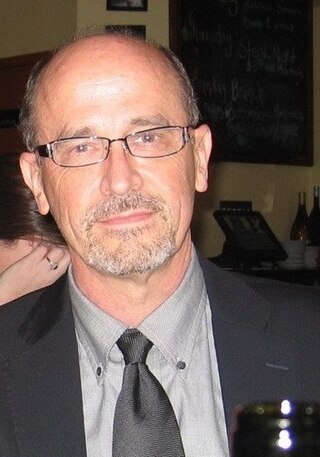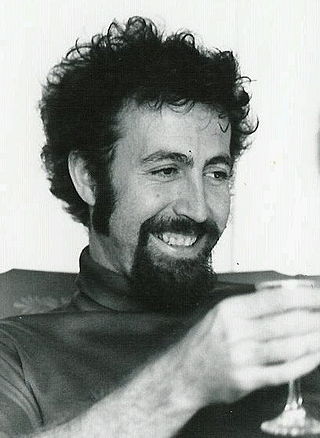Awards
- 1998: Breakthrough of the Year, Science magazine
- 2006: Shaw Prize
- 2007: Gruber Prize in Cosmology
- 2011: Nobel Prize in Physics
- 2011: Albert Einstein Medal
- 2015: Breakthrough Prize in Fundamental Physics
- 2015: Wolf Prize in Physics

The High-Z Supernova Search Team was an international cosmology collaboration which used Type Ia supernovae to chart the expansion of the universe. The team was formed in 1994 by Brian P. Schmidt, then a post-doctoral research associate at Harvard University, and Nicholas B. Suntzeff, a staff astronomer at the Cerro Tololo Inter-American Observatory (CTIO) in Chile. The original team first proposed for the research on September 29, 1994, in a proposal called A Pilot Project to Search for Distant Type Ia Supernova to the CTIO. The original team as co-listed on the first observing proposal was: Nicholas Suntzeff (PI); Brian Schmidt (Co-I); (other Co-Is) R. Chris Smith, Robert Schommer, Mark M. Phillips, Mario Hamuy, Roberto Aviles, Jose Maza, Adam Riess, Robert Kirshner, Jason Spiromilio, and Bruno Leibundgut. The original project was awarded four nights of telescope time on the CTIO Víctor M. Blanco Telescope on the nights of February 25, 1995, and March 6, 24, and 29, 1995. The pilot project led to the discovery of supernova SN1995Y. In 1995, the HZT elected Brian P. Schmidt of the Mount Stromlo Observatory which is part of the Australian National University to manage the team.
The team expanded to roughly 20 astronomers located in the United States, Europe, Australia, and Chile. They used the Víctor M. Blanco telescope to discover Type Ia supernovae out to redshifts of z = 0.9. The discoveries were verified with spectra taken mostly from the telescopes of the Keck Observatory, and the European Southern Observatory.
In a 1998 study led by Adam Riess, the High-Z Team became the first to publish evidence that the expansion of the Universe is accelerating (Riess et al. 1998, AJ, 116, 1009, submitted March 13, 1998, accepted May 1998). The team later spawned Project ESSENCE led by Christopher Stubbs of Harvard University and the Higher-Z Team led by Adam Riess of Johns Hopkins University and Space Telescope Science Institute.
In 2011, Riess and Schmidt, along with Saul Perlmutter of the Supernova Cosmology Project, were awarded the Nobel Prize in Physics for this work. [1]


In cosmology, the cosmological constant, alternatively called Einstein's cosmological constant, is the constant coefficient of a term that Albert Einstein temporarily added to his field equations of general relativity. He later removed it. Much later it was revived and reinterpreted as the energy density of space, or vacuum energy, that arises in quantum mechanics. It is closely associated with the concept of dark energy.

Mount Stromlo Observatory located just outside Canberra, Australia, is part of the Research School of Astronomy and Astrophysics at the Australian National University (ANU).

Saul Perlmutter is a U.S. astrophysicist, a professor of physics at the University of California, Berkeley, where he holds the Franklin W. and Karen Weber Dabby Chair, and head of the International Supernova Cosmology Project at the Lawrence Berkeley National Laboratory. He is a member of both the American Academy of Arts & Sciences and the American Philosophical Society, and was elected a Fellow of the American Association for the Advancement of Science in 2003. He is also a member of the National Academy of Sciences. Perlmutter shared the 2006 Shaw Prize in Astronomy, the 2011 Nobel Prize in Physics, and the 2015 Breakthrough Prize in Fundamental Physics with Brian P. Schmidt and Adam Riess for providing evidence that the expansion of the universe is accelerating. Since 2021, he has been a member of the President’s Council of Advisors on Science and Technology (PCAST).

A Type Ia supernova is a type of supernova that occurs in binary systems in which one of the stars is a white dwarf. The other star can be anything from a giant star to an even smaller white dwarf.

Robert P. Kirshner is an American astronomer, Chief Program Officer for Science for the Gordon and Betty Moore Foundation, and the Clownes Research Professor of Science at Harvard University. Kirshner has worked in several areas of astronomy including the physics of supernovae, supernova remnants, the large-scale structure of the cosmos, and the use of supernovae to measure the expansion of the universe.
The Supernova Cosmology Project is one of two research teams that determined the likelihood of an accelerating universe and therefore a positive cosmological constant, using data from the redshift of Type Ia supernovae. The project is headed by Saul Perlmutter at Lawrence Berkeley National Laboratory, with members from Australia, Chile, France, Portugal, Spain, Sweden, the United Kingdom, and the United States.

Alexei Vladimir "Alex" Filippenko is an American astrophysicist and professor of astronomy at the University of California, Berkeley. Filippenko graduated from Dos Pueblos High School in Goleta, California. He received a Bachelor of Arts in physics from the University of California, Santa Barbara in 1979 and a Ph.D. in astronomy from the California Institute of Technology in 1984, where he was a Hertz Foundation Fellow. He was a postdoctoral Miller Fellow at Berkeley from 1984 to 1986 and was appointed to Berkeley's faculty in 1986. In 1996 and 2005, he a Miller Research Professor, and he is currently a Senior Miller Fellow. His research focuses on supernovae and active galaxies at optical, ultraviolet, and near-infrared wavelengths, as well as on black holes, gamma-ray bursts, and the expansion of the Universe.

Adam Guy Riess is an American astrophysicist and Bloomberg Distinguished Professor at Johns Hopkins University and the Space Telescope Science Institute. He is known for his research in using supernovae as cosmological probes. Riess shared both the 2006 Shaw Prize in Astronomy and the 2011 Nobel Prize in Physics with Saul Perlmutter and Brian P. Schmidt for providing evidence that the expansion of the universe is accelerating.

Brian Paul Schmidt is the Vice-Chancellor of the Australian National University (ANU). He was previously a Distinguished Professor, Australian Research Council Laureate Fellow and astrophysicist at the University's Mount Stromlo Observatory and Research School of Astronomy and Astrophysics. He is known for his research in using supernovae as cosmological probes. He currently holds an Australian Research Council Federation Fellowship and was elected a Fellow of the Royal Society (FRS) in 2012. Schmidt shared both the 2006 Shaw Prize in Astronomy and the 2011 Nobel Prize in Physics with Saul Perlmutter and Adam Riess for providing evidence that the expansion of the universe is accelerating, making him the only Montana-born Nobel laureate.

Nicholas B. Suntzeff is an American astronomer and cosmologist. He is a University Distinguished Professor and holds the Mitchell/Heep/Munnerlyn Chair of Observational Astronomy in the Department of Physics & Astronomy at Texas A&M University where he is Director of the Astronomy Program. He is an observational astronomer specializing in cosmology, supernovae, stellar populations, and astronomical instrumentation. With Brian Schmidt he founded the High-z Supernova Search Team, which was honored with the Nobel Prize in Physics in 2011 to Schmidt and Adam Riess.

Mark M. Phillips (born March 31, 1951) is an American astronomer who works on the observational studies of all classes of supernovae. He has worked on SN 1986G, SN 1987A, the Calán/Tololo Supernova Survey, the High-Z Supernova Search Team, and the Phillips relationship. This relationship has allowed the use of Type Ia supernovae as standard candles, leading to the precise measurements of the Hubble constant H0 and the deceleration parameter q0, the latter implying the existence of dark energy or a cosmological constant in the Universe.

In 2011, Chile was home to 42% of the world's astronomical infrastructure, consisting principally of telescopes. In 2015, it was estimated that Chile would contain more than 50% of the global astronomical infrastructure by 2030. In the Atacama desert region of northern Chile, the skies are exceptionally clear and dry for more than 300 days of the year. These conditions have attracted the world's scientific community to develop highly ambitious astronomical projects in the Atacama desert.

Christopher Stubbs is an experimental physicist currently on the faculty at Harvard University in both the Department of Physics and the Department of Astronomy. He is the current Dean of Science at Harvard University and a former Chair of Harvard's Department of Physics.

Robert A. Schommer was an American observational astronomer. He was a professor at Rutgers University and later a project scientist for the U.S. office of the Gemini Observatory Project at the Cerro Tololo Inter-American Observatory (CTIO) in Chile. He was known for his wide range of research interests, from stellar populations to cosmology.

Mario Andrés Hamuy Wackenhut is a Chilean Astronomer and Professor of Astronomy at the University of Chile and Cerro Calan Observatory. He is well known for his observational work on all classes of supernovae, especially the use of Type Ia and Type II supernovae as measures of cosmic distance.

The Calán/Tololo Supernova Survey was a supernova survey that ran from 1989 to 1995 at the University of Chile and the Cerro Tololo Inter-American Observatory to measure a Hubble diagram out to redshifts of 0.1. It was founded by Mario Hamuy, José Maza Sancho, Mark M. Phillips, and Nicholas B. Suntzeff in 1989 out of discussions at the UC Santa Cruz meeting on supernovae on how to improve the Hubble diagram using Type Ia supernovae. It was also motivated by the suggestion of Allan Sandage to restart a supernova survey after the Sandage and Tammann survey failed due to poor quality photographic plates in 1986. The Survey built on the original supernova survey of Maza done at the f/3 Maksutov Camera at the Cerro Roble Observatory of the University of Chile between 1979 and 1984. The Survey used the CTIO Curtis Schmidt telescope with IIa-O photographic plates, each plate covering a field of 25 sq-deg on the sky. The plates were developed and sent to Santiago Chile the next morning and searched for supernovae at the Department of Astronomy at the University of Chile. Any supernova candidates were then observed the next night using the 0.9m telescope at CTIO with a CCD camera. This was one of the first studies done in astronomy where the telescope time was scheduled to observe objects not yet discovered.

In astrophysics, the Phillips relationship is the relationship between the peak luminosity of a Type Ia supernova and the speed of luminosity evolution after maximum light. The relationship was independently discovered by the American statistician and astronomer Bert Woodard Rust and the Soviet astronomer Yury Pavlovich Pskovskii in the 1970s. They found that the faster the supernova faded from maximum light, the fainter its peak magnitude was. As a main parameter characterizing the light curve shape, Pskovskii used β, the mean rate of decline in photographic brightness from maximum light to the point at which the luminosity decline rate changes. β is measured in magnitudes per 100-day intervals. Selection of this parameter is justified by the fact that, at that time, the probability of discovering a supernova before the maximum light, and obtain the full light curve, was small. Moreover, the existing light curves were mostly incomplete. On the other hand, to determine the decline after the maximum light was rather simple for most observed supernovae.

Pilar Ruiz-Lapuente is an astrophysicist working as a professor at the University of Barcelona. Her work has included research on type Ia supernovae. In 2004, she led the team that searched for the companion star to the white dwarf that became supernova SN 1572, observed by Tycho Brahe, among others. Ruiz-Lapuente's research on supernovae contributed to the discovery of the accelerating expansion of the universe.
Craig Hogan is a Professor of Astronomy and Physics at the University of Chicago and director of the Fermilab Center for Particle Astrophysics.

Bruno Leibundgut is a Swiss astronomer born in Basel. His work focuses on supernovae and cosmology. He was a member of the High-z Supernova Search Team and participated in the planning, development and start of the operations of the Very Large Telescope.